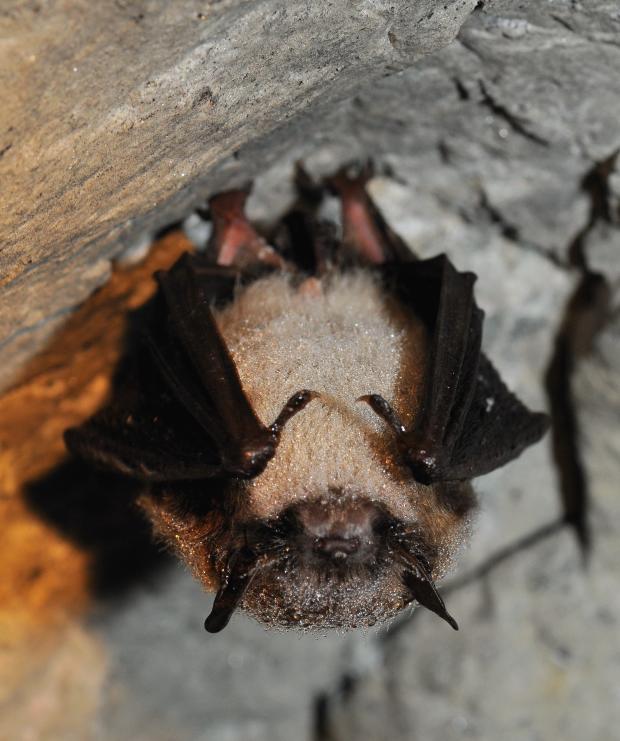Across North America, DDT and other pesticides had a huge effect on bats from the 1940s through the 1960s. Since the ban of DDT in 1972, the population of bats has been slowly recovering. The last hibernating colony of Indiana Bats in Massachusetts was in a mine in the town of Chester in 1939. As their population slowly increased in New York and they returned to Vermont, there was hope that this species would soon be re-discovered in Massachusetts, as well.
However, these hopes diminished when White-nose Syndrome (WNS) was discovered in a New York cave in 2006. The fungus that causes WNS spread rapidly across much of the United States, and the numbers of bat species that hibernate in caves and mines crashed. As a result of WNS, the Indiana Bat did not return to Massachusetts, and all four bat species that spend winters in caves or mines were listed as Endangered in Massachusetts in 2012. This includes the Little Brown Bat, Northern Long-eared Bat, Eastern Small-footed Bat, and Tricolored Bat. The Little Brown Bat was once the most abundant bat species in Massachusetts, but its population declined by more than 99% after the onset of WNS.
All five of the most important bat hibernacula are now closed to public access to protect the few surviving bats from disturbance. MassWildlife acquired two of the mines and installed gates to protect the bats. These gates are specially designed to allow the bats to freely fly through while keeping people out. Research is underway to better understand the fungus that causes WNS, but currently there is no way to prevent or effectively treat it.
Massachusetts Bat Species
There are 9 species of bats that live in Massachusetts, 5 of which are listed under MESA as Endangered.
| Common Name | Scientific Name | Status | Range | Summer Habitat | Winter Habitat |
|---|---|---|---|---|---|
| Big brown bat | Eptesicus fuscus | Common | statewide | buildings, trees | buildings, caves, mines |
| Little brown bat | Myotis lucifugus | MA: E | statewide | buildings | caves, mines |
| Northern long-eared bat | Myotis septentrionalis |
MA: E Fed: E |
statewide | trees, building exteriors (rarely inside buildings) | caves, mines |
| Indiana bat | Myotis sodalis |
MA: E Fed: E |
Berkshire & Hampden counties (last record 1939) | caves, mines, hollow trees, under tree bark | caves, mines |
| Eastern small-footed bat | Myotis leibii | MA: E | Berkshire & Hampden counties | under tree bark; in rock talus & deep fissures | caves, mines |
| Tricolored bat | Perimyotis subflavus | MA: E | statewide | trees (rarely in buildings) | caves, mines, rock crevices |
| Silver-haired bat | Lasionycteris noctivagans | Common | probably statewide | trees, rock crevices | buildings, trees (migratory) |
| Eastern red bat | Lasiurus borealis | Common | statewide | tree foliage | migratory |
| Hoary bat | Lasiurus cinereus | Common | statewide | tree foliage | migratory |
Additional Resources
Contact for Bats of Massachusetts
Online
Phone
Open M–F, 8 a.m.–4 p.m. (closed noon–12:30 for lunch)
North/Central/Western Massachusetts
Southeastern Massachusetts/Cape & Islands
